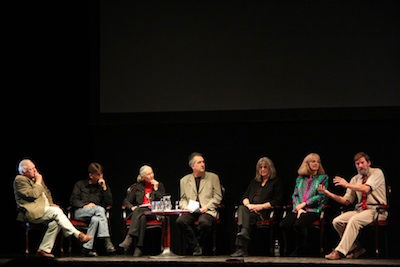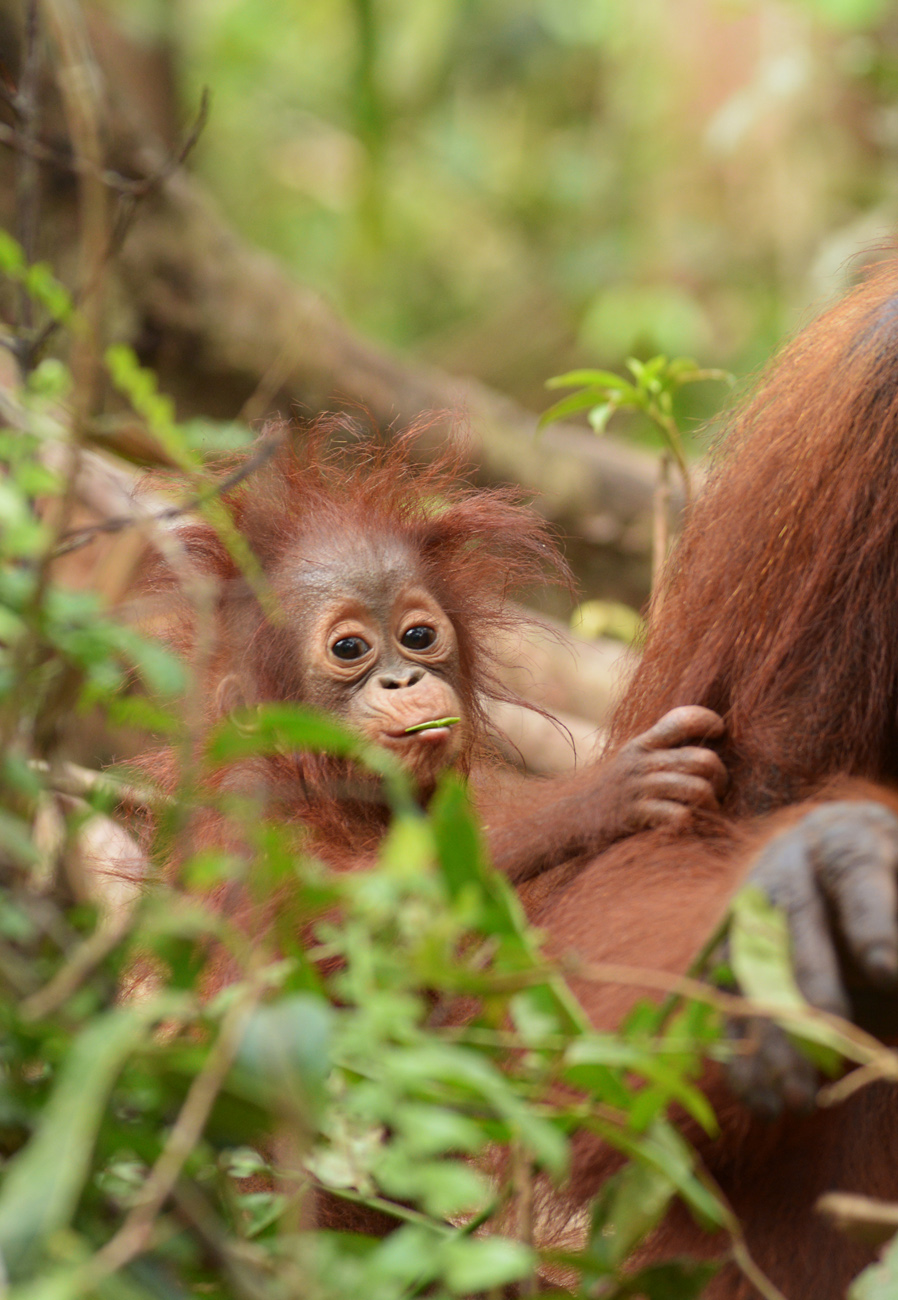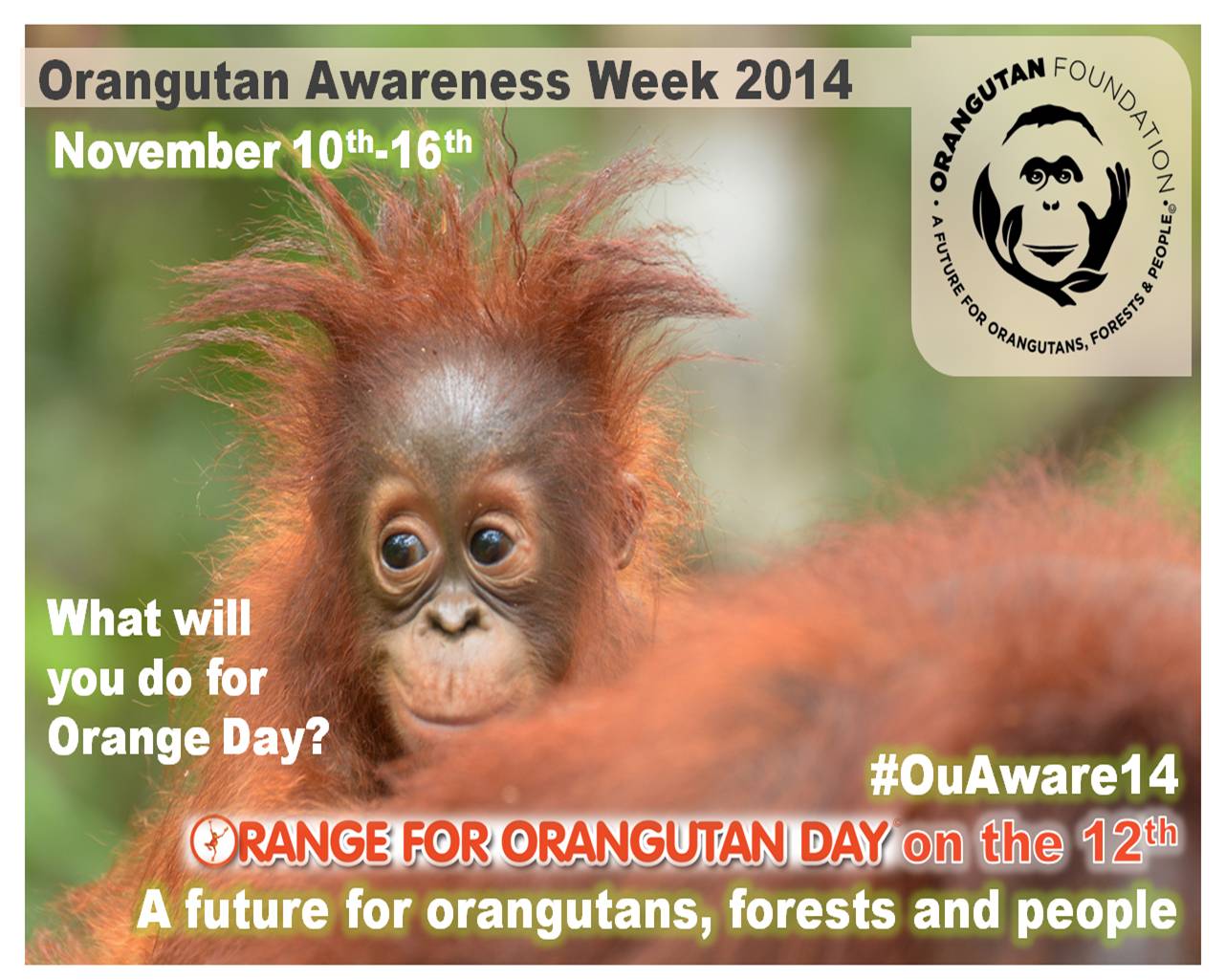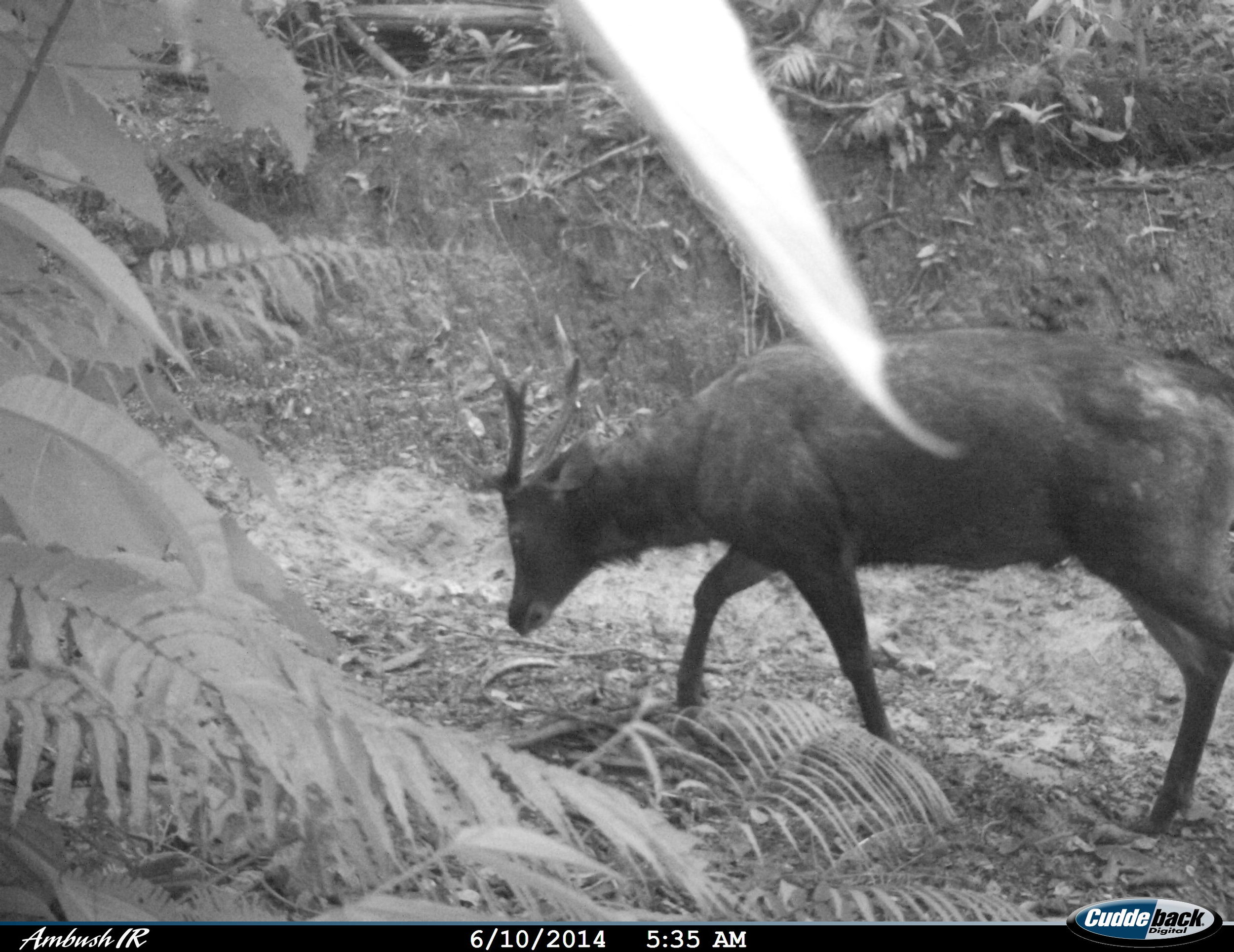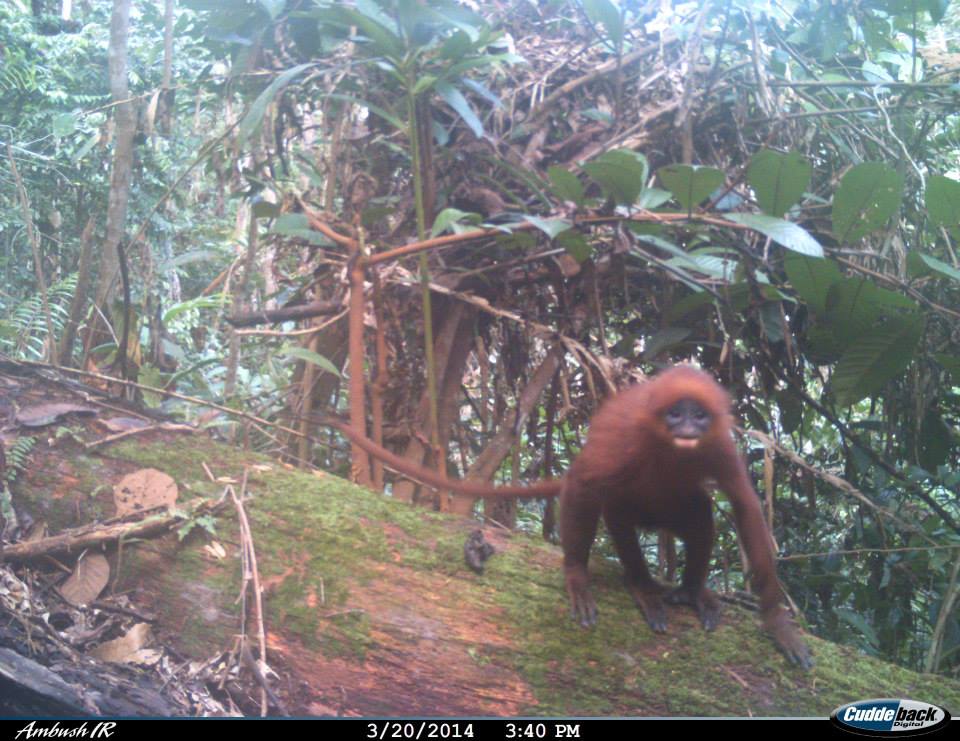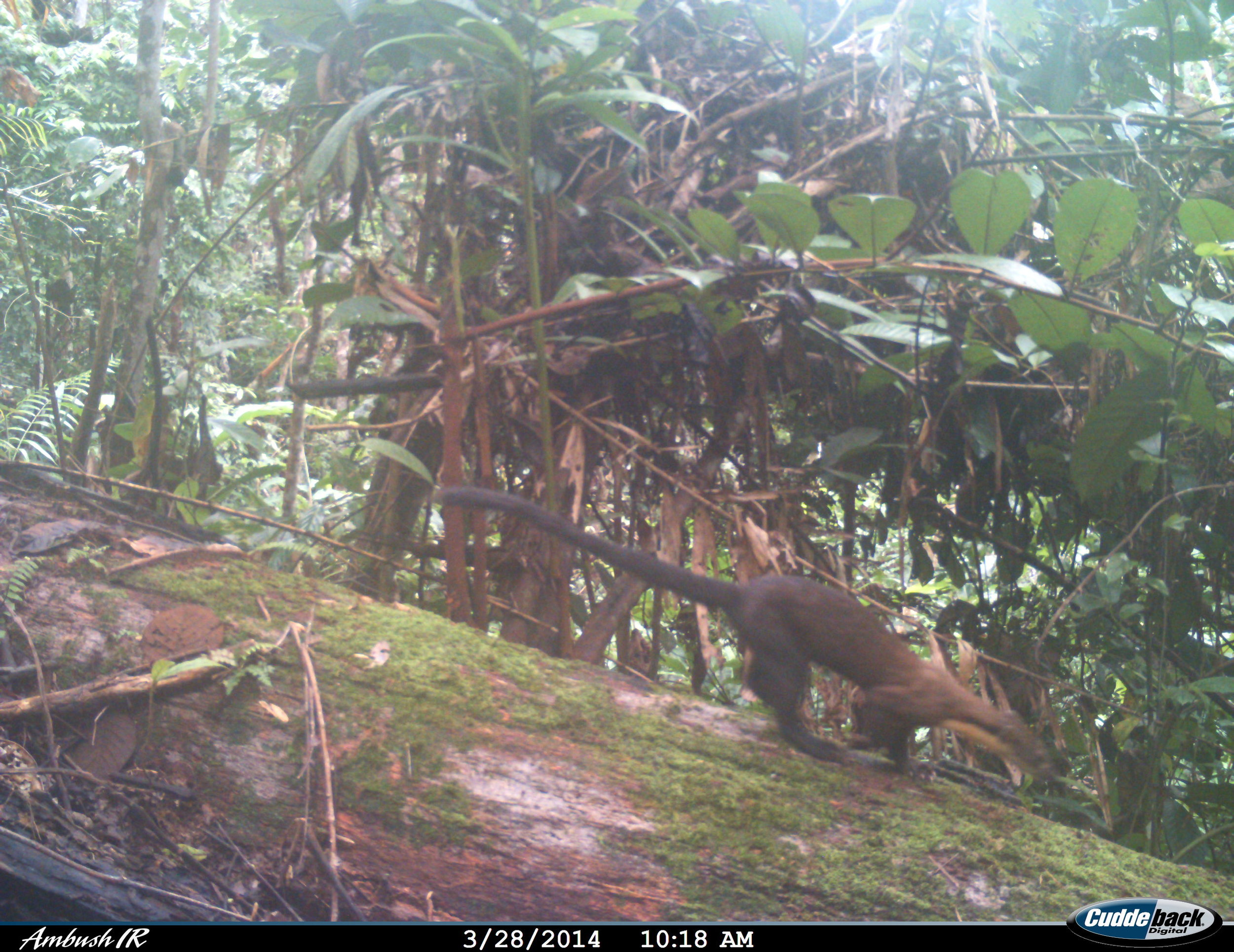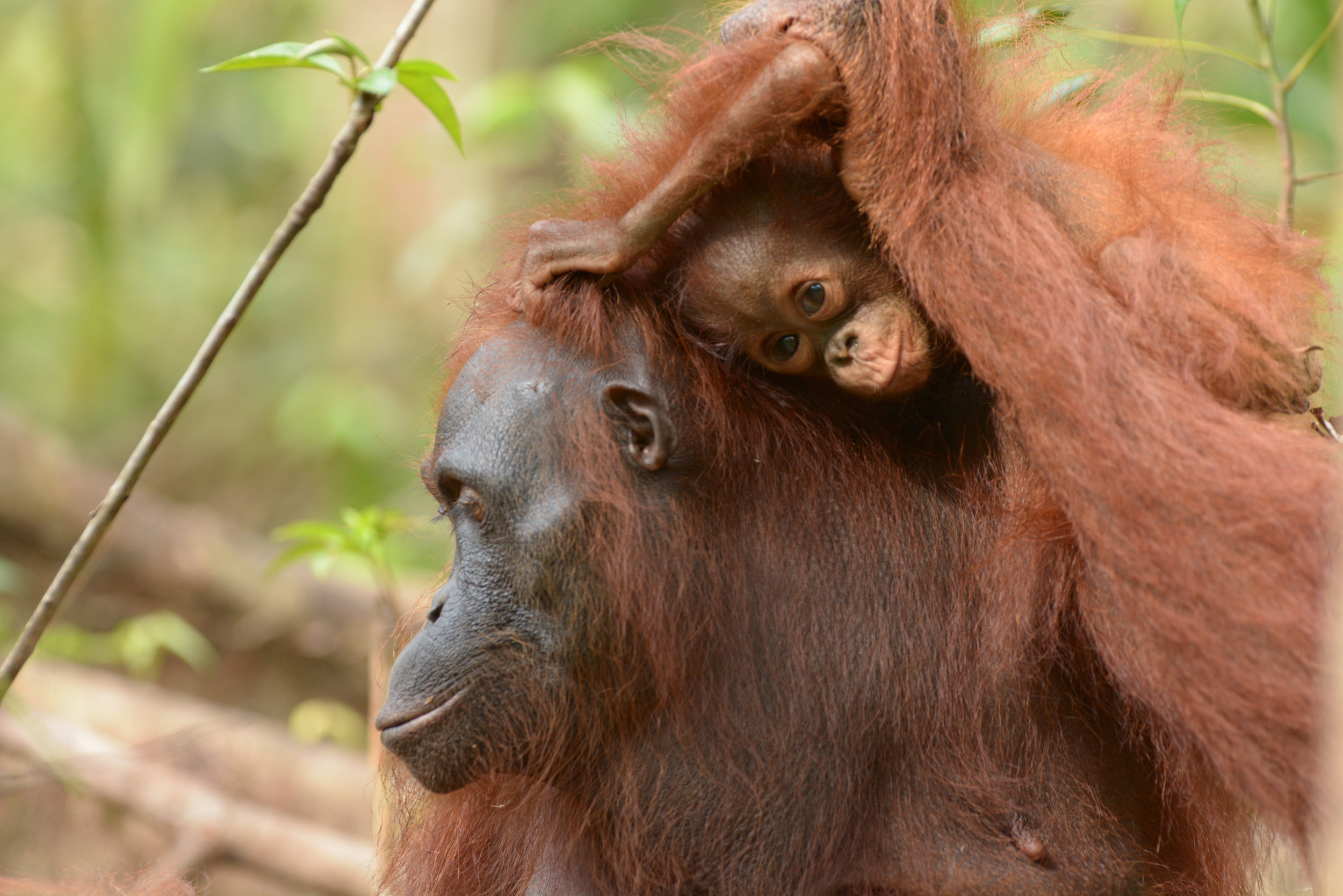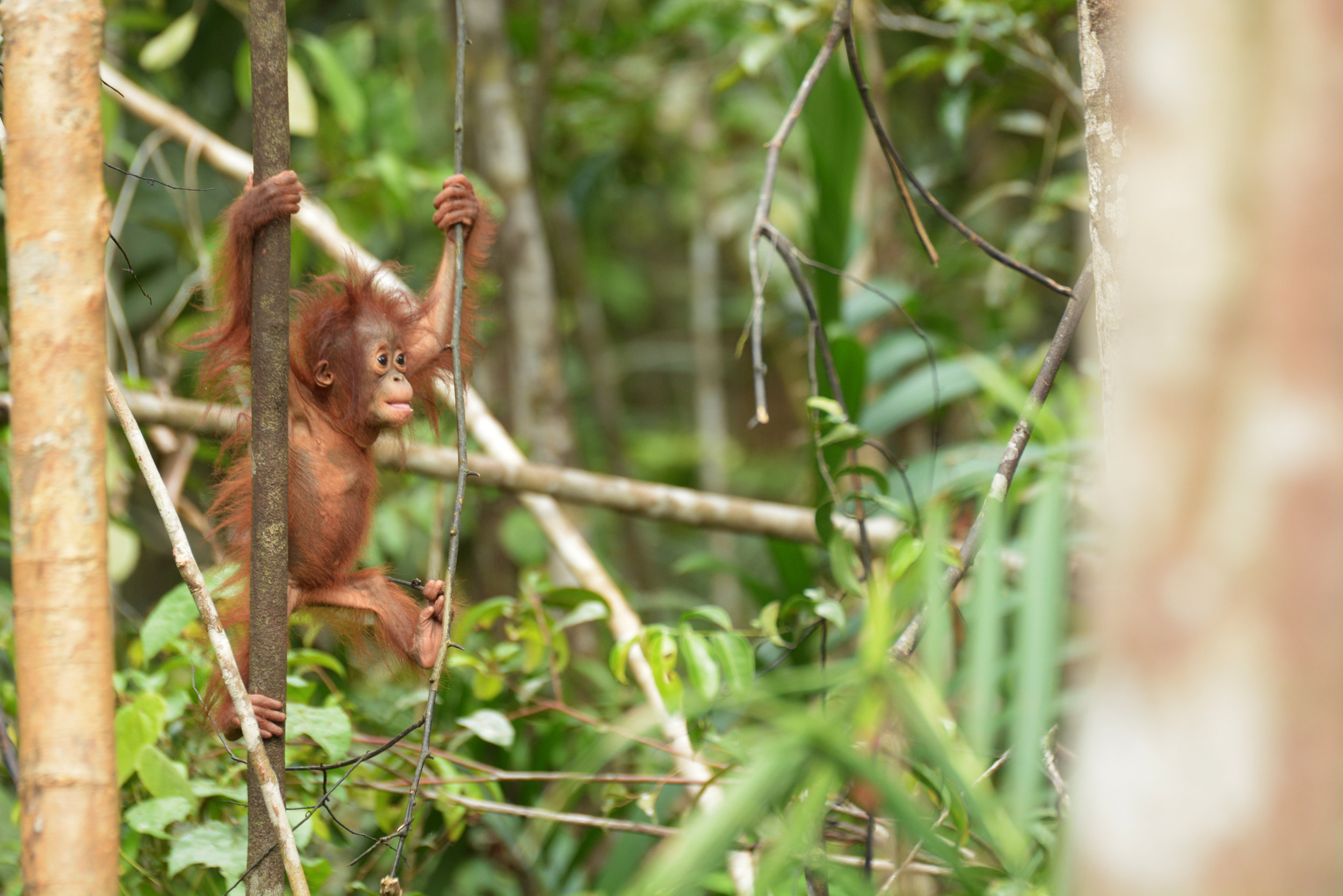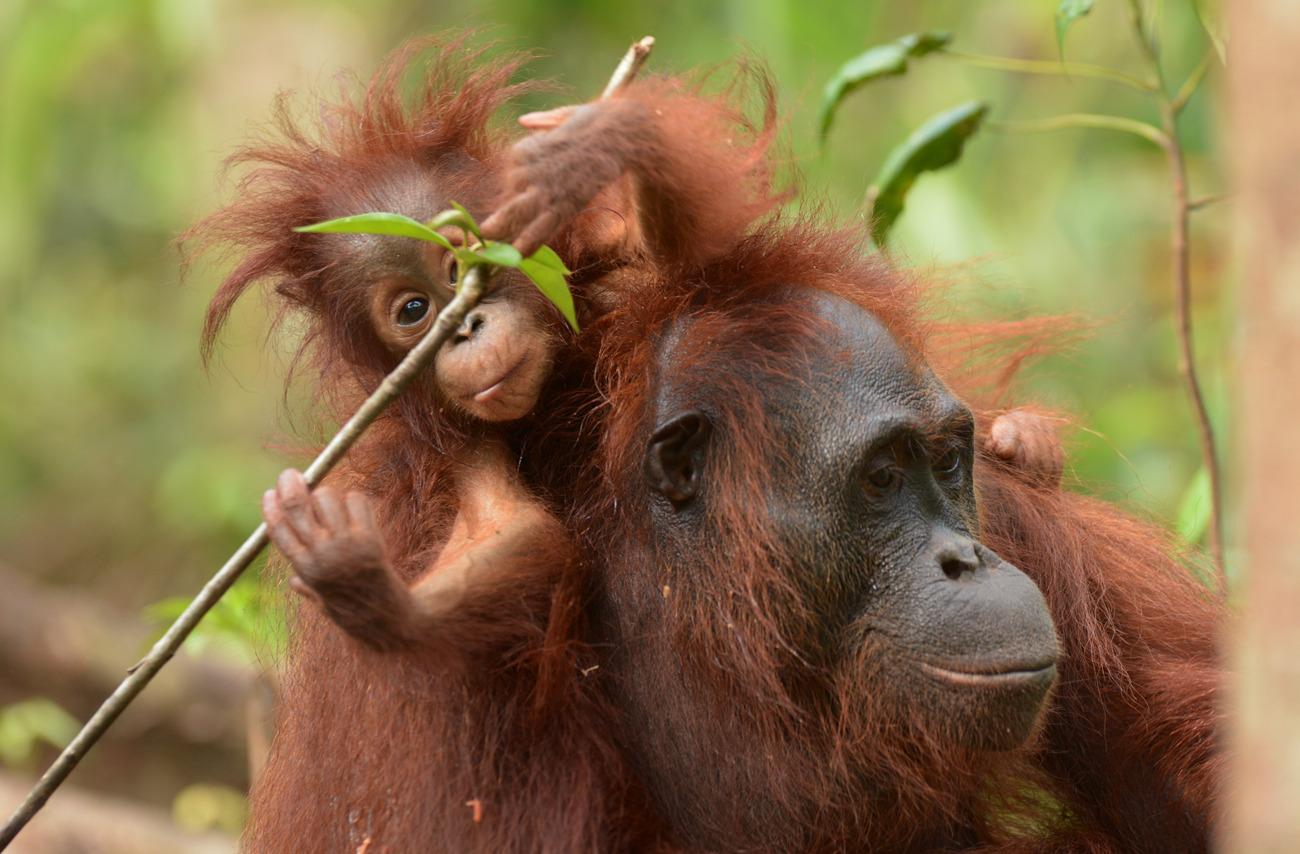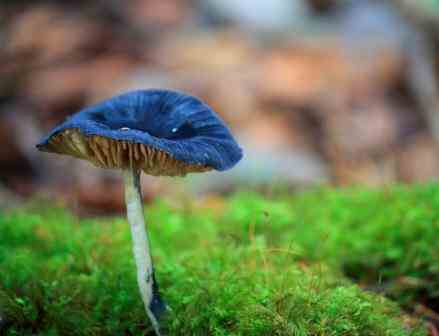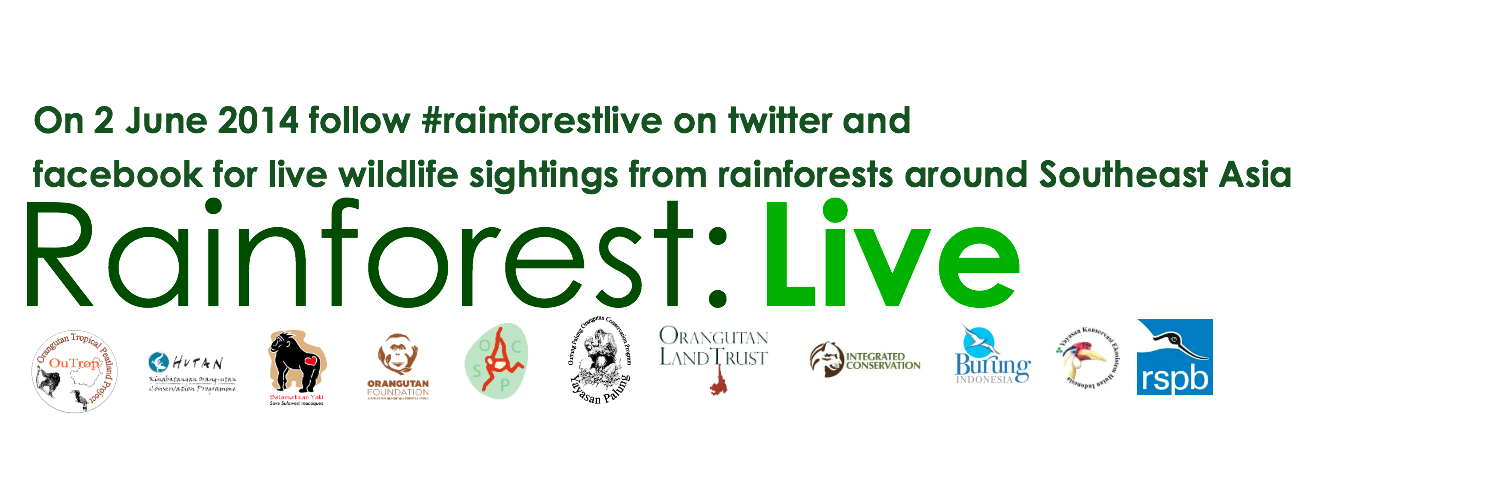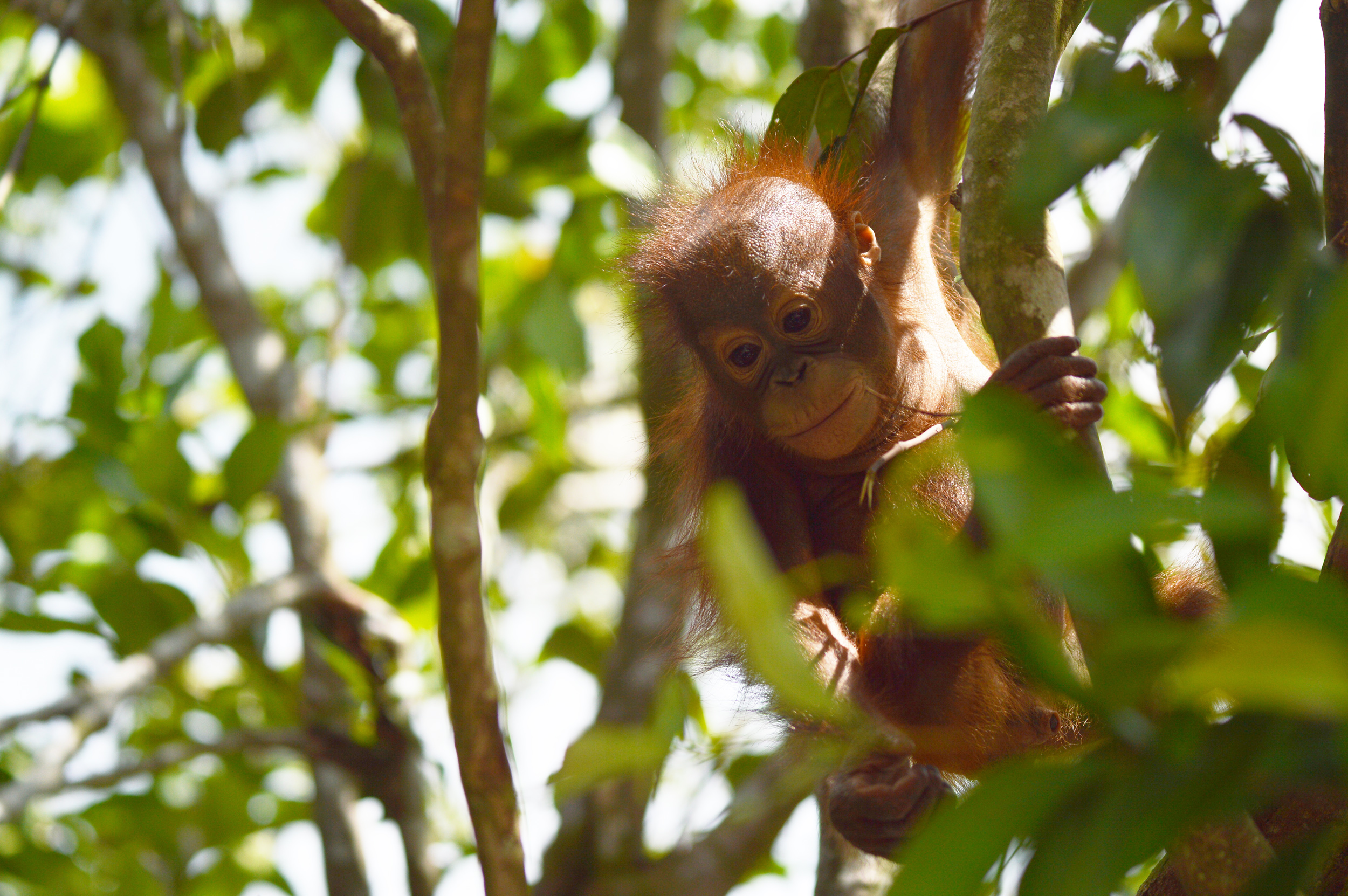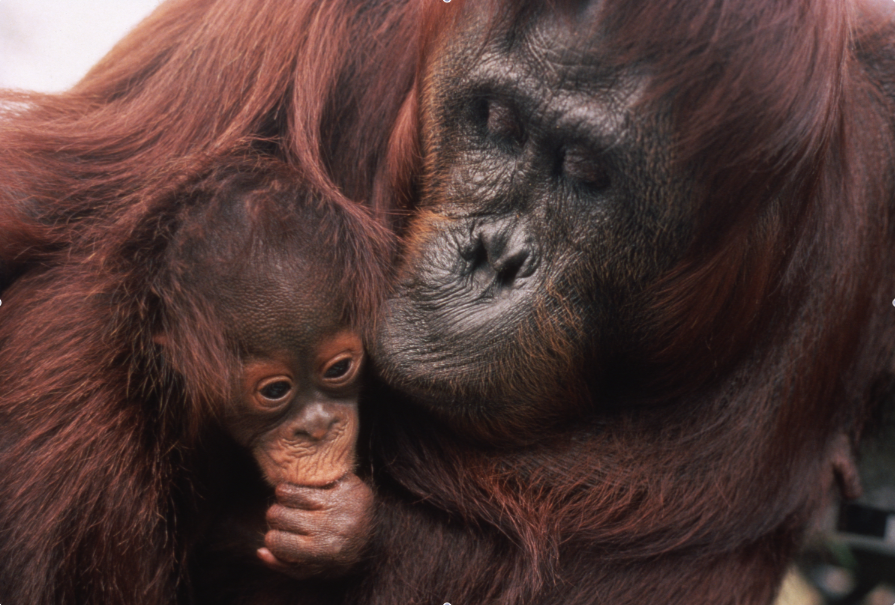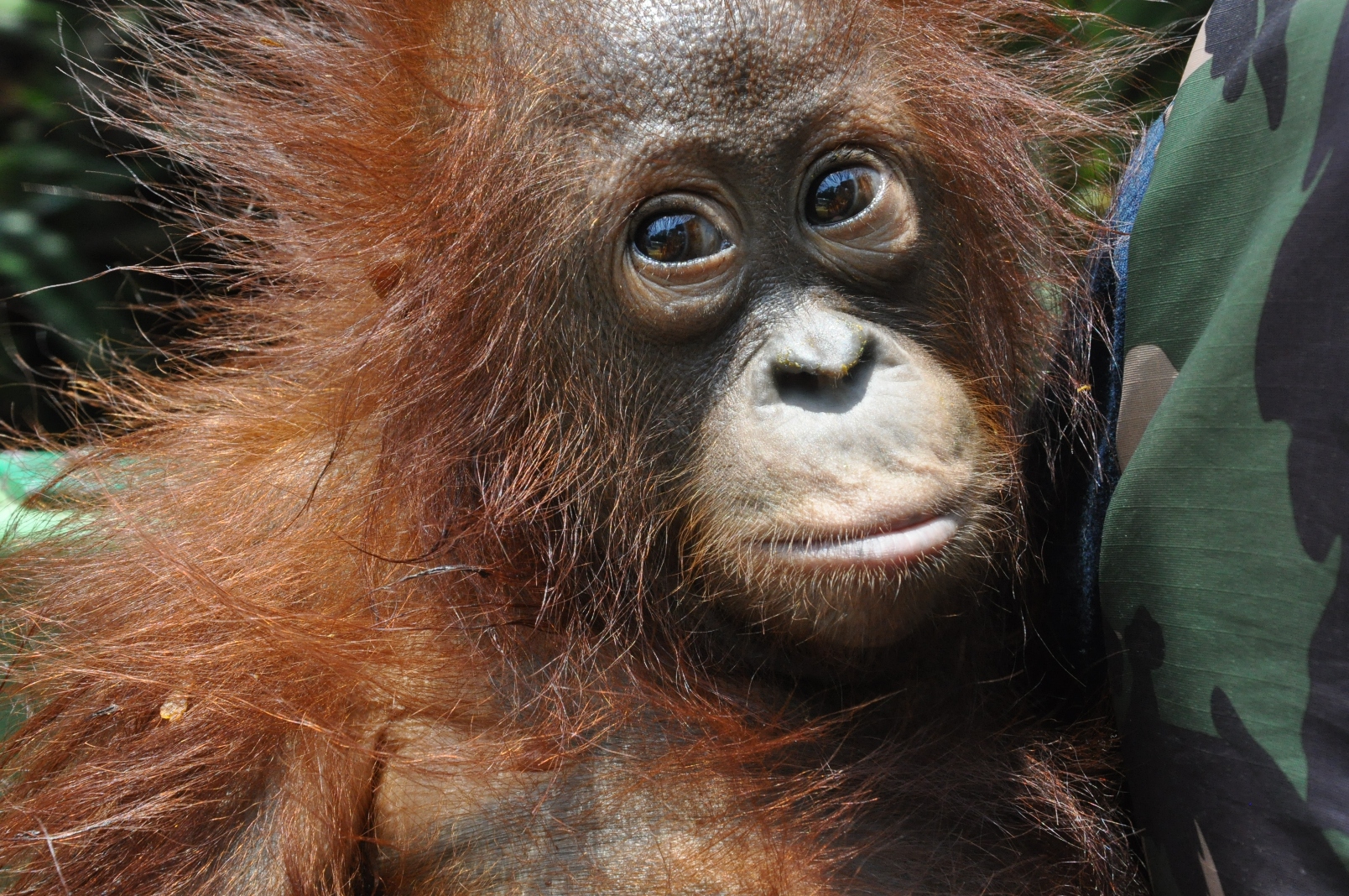Rainforest Reflections by Rowan Sharp It’s only my second day in Pangkalan Bun and we already have six orangutans awaiting their release. I’m initially not sure whether to be thrilled by my good timing, or devastated by the sudden number of wild animals in need of a safe home. Regardless, four wild orangutans were released into the Lamandau Wildlife Reserve today: two females, Menteng and Nurbaya, and their two male infants.
Despite spending each and every day working to protect our orangutan cousins, these four are the first wild orangutans I have ever laid eyes on! And wild they were… Menteng and Nurbaya greeted us with loud kiss-squeaks (the sound orangutans use to express displeasure) and aggressive rattles of their cages. Though it’s never pleasant to see an animal in a cage, the wild nature the females exhibited is a fantastic sign and bodes well for the success of their release into the wild.
Their immense strength was immediately clear, and it was admittedly a great struggle to transfer them from town to the river, and then by speedboat to the release site in the Lamandau Wildlife Reserve. The sun was extremely strong throughout the day and as time passed the orangutans’ frustration was mounting. When we finally arrived at the release site, Menteng nearly overturned her cage she was shaking it so hard!
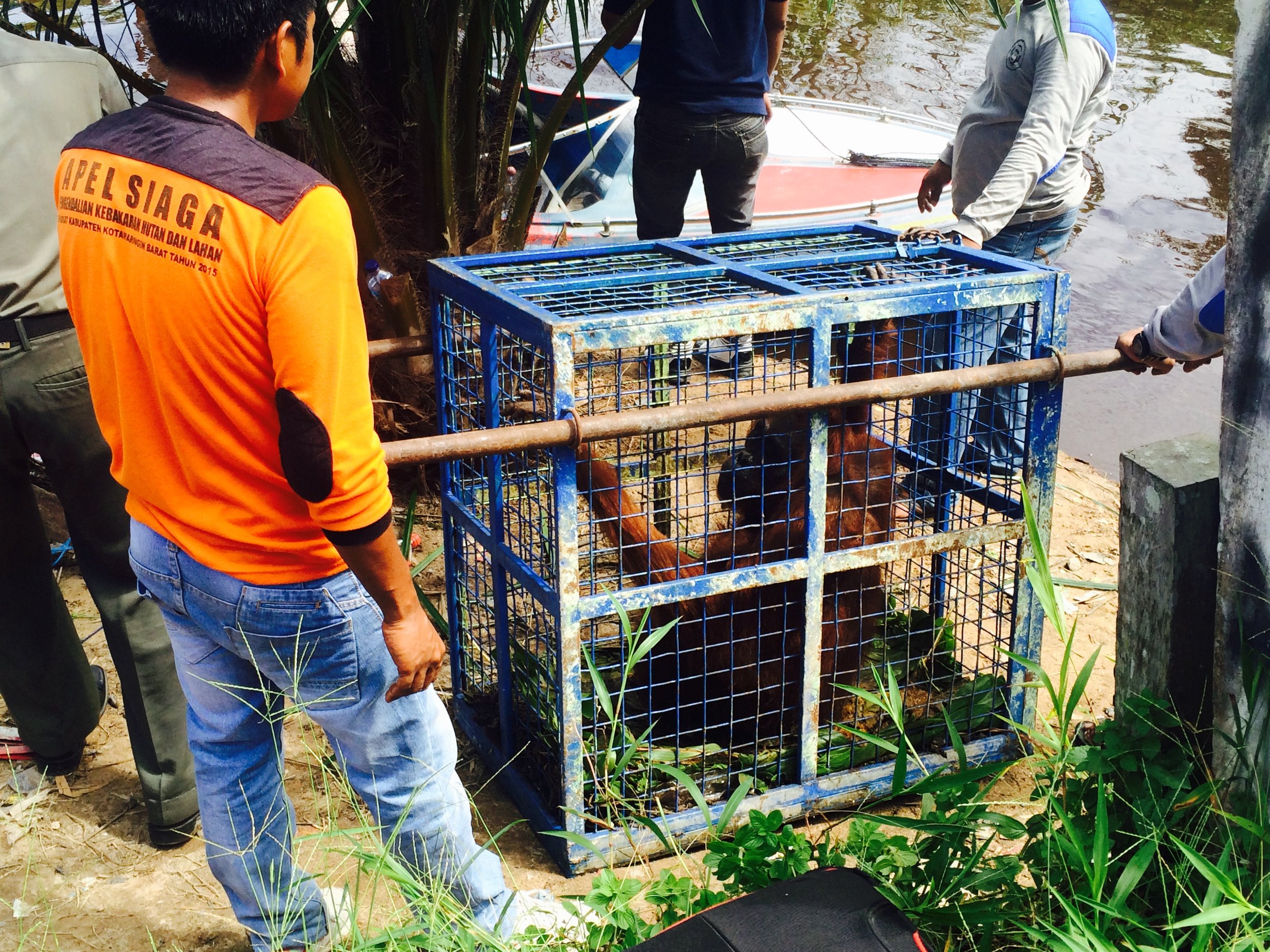
But when the first set of cage doors eventually opened, mother and infant sped up the nearest tree, swung to the next and then rapidly out of sight. Nurbaya's release was almost identical. We were, however, aware that Menteng remained in the vicinity, because she continued to kiss-squeak at us from the canopies! Evidently she was tired of our company…
Despite the constant worry of causing any stress for the orangutans during their translocation, the actual release was an extremely calm and rather moving moment. Orangutans never seem to hesitate for even a moment before racing to freedom - if you had no interest in great apes, this moment might feel anti-climactic to you because of the speed at which they disappear out of sight – but for me, their scaling of a tall tree has an almost fantastical super-hero quality to it. I myself am extremely grateful to have witnessed these releases in person, and to know that these orangutans are now safe to live out their days in the wild.
But sadly the need for orangutan rescues is never a good sign. These orangutans and their infants were both found within oil-palm plantations in the Kotawaringin Timur district of Central Kalimantan. This area has proved to be an ever-rising problem for the Orangutan Foundation, with more and more orangutans needing rescue here. The Kotawaringin Timur district doesn’t have a single protected conservation area, and after the recent forest fires in 2015, the natural habitat is seriously dwindling. Only oil-palm plantations remain, and because orangutans are constantly on the move and need a variety of food, it’s hardly surprising that they venture out of fragmented forest into plantations and community land.
What is surprising is that this is the 12th rescue this year from the same area, and it’s only April! For a point of reference, the Foundation rescued 19 orangutans over the duration of a year in 2015, and all were unique cases from different areas of Central Kalimantan. We will continue to discuss these issues with the Indonesian government throughout the week, and merely hope these numbers don’t continue to grow in the meantime.

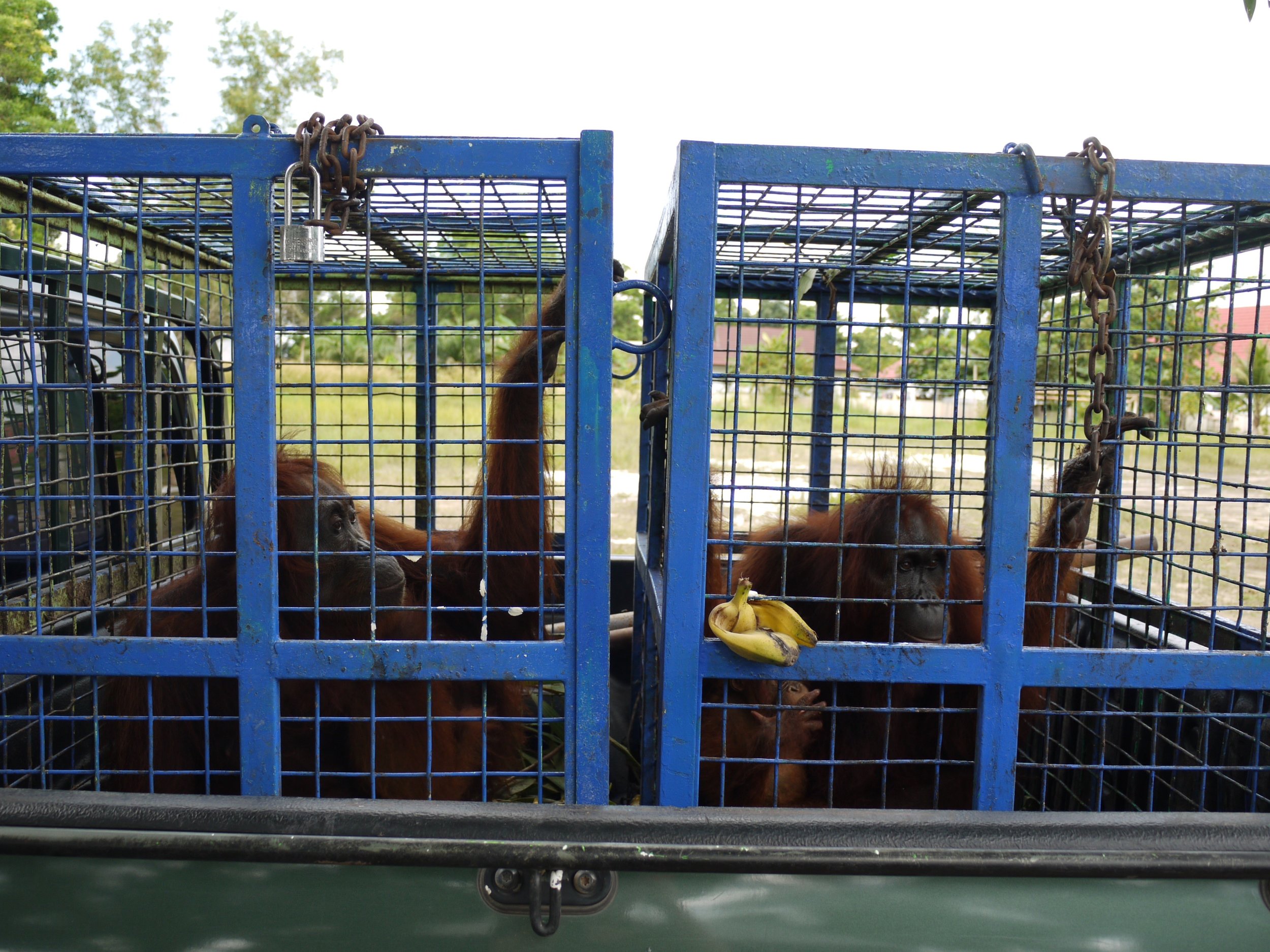
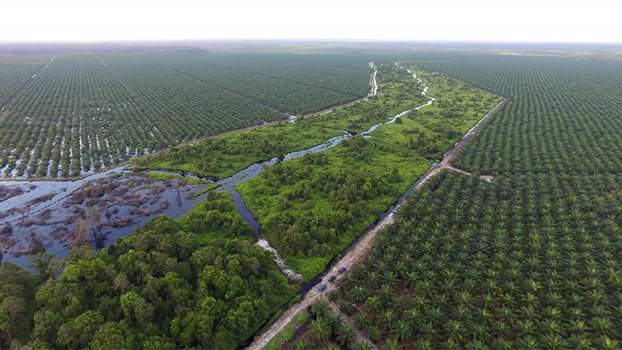

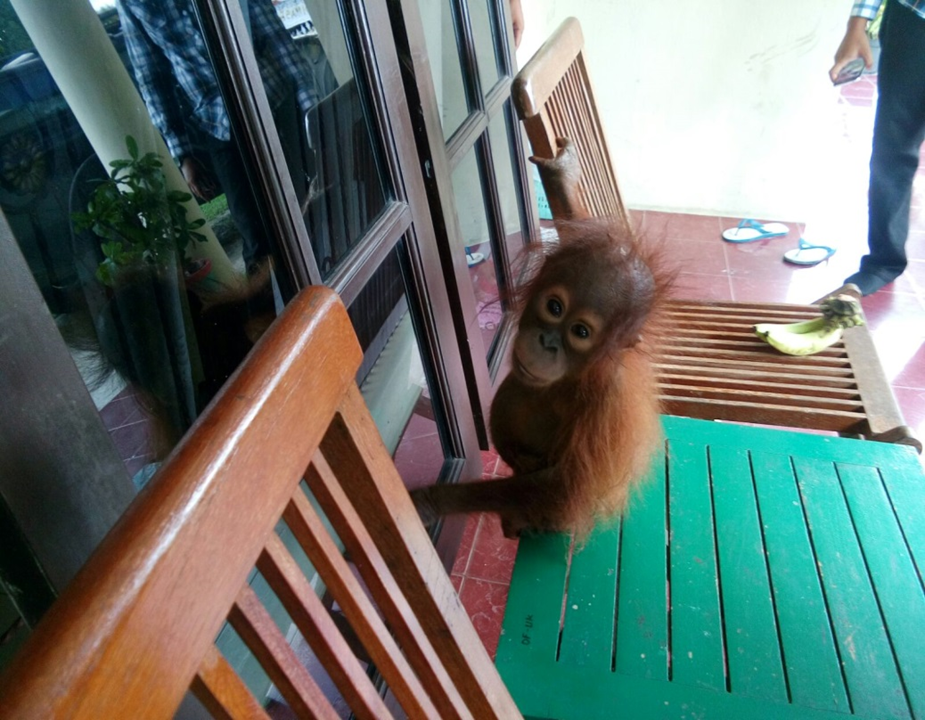
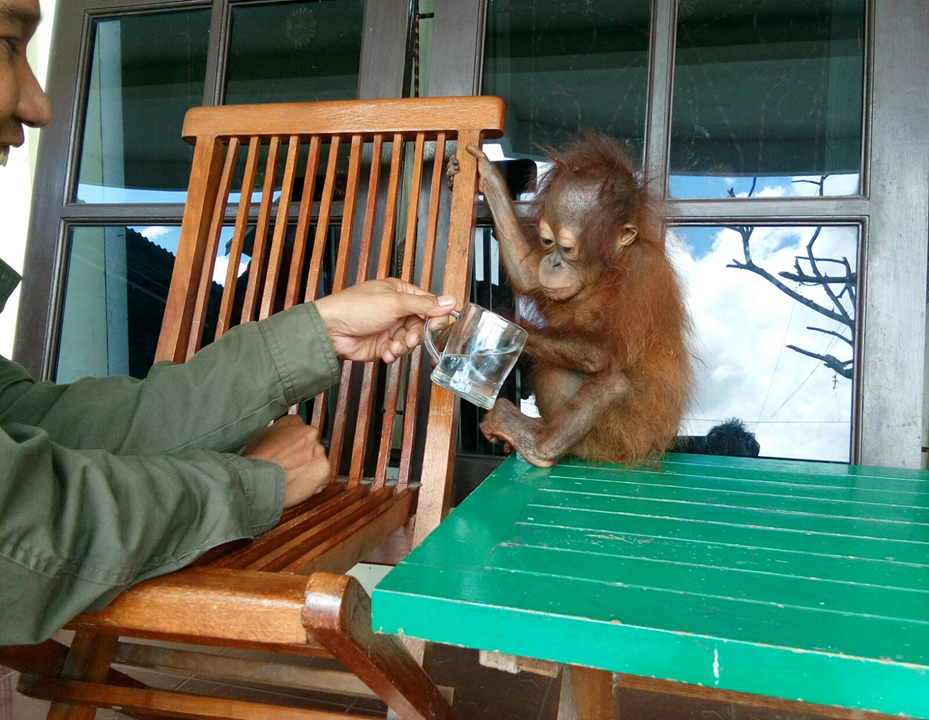
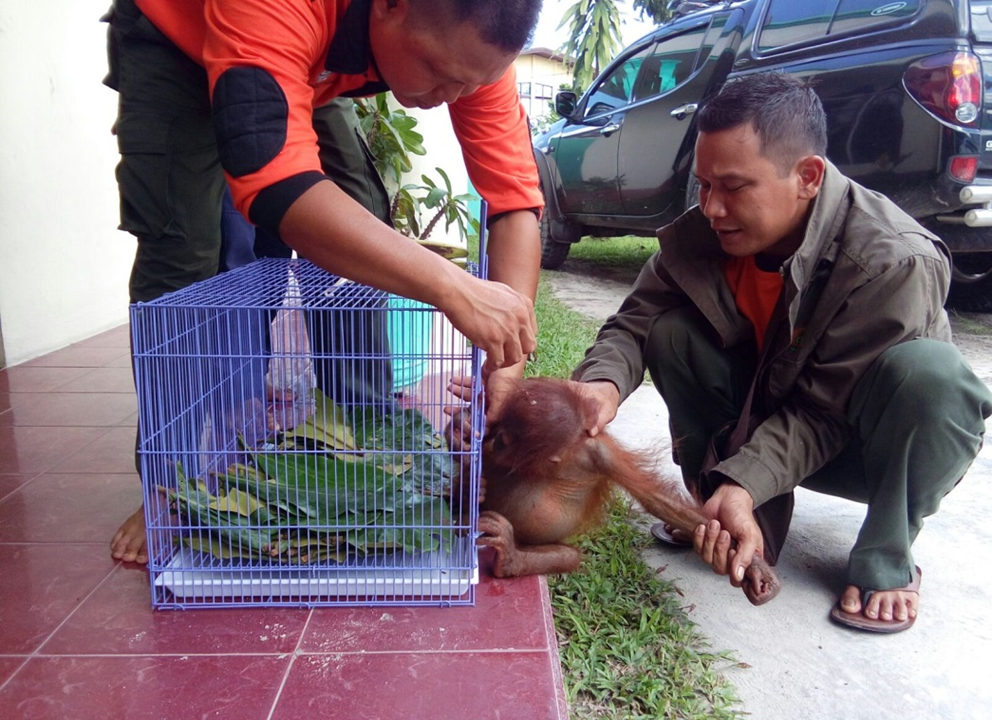


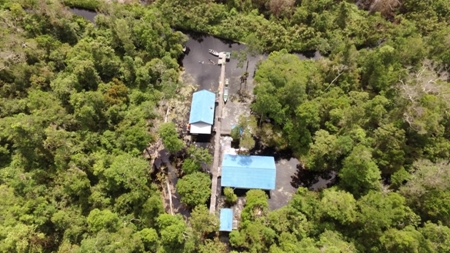





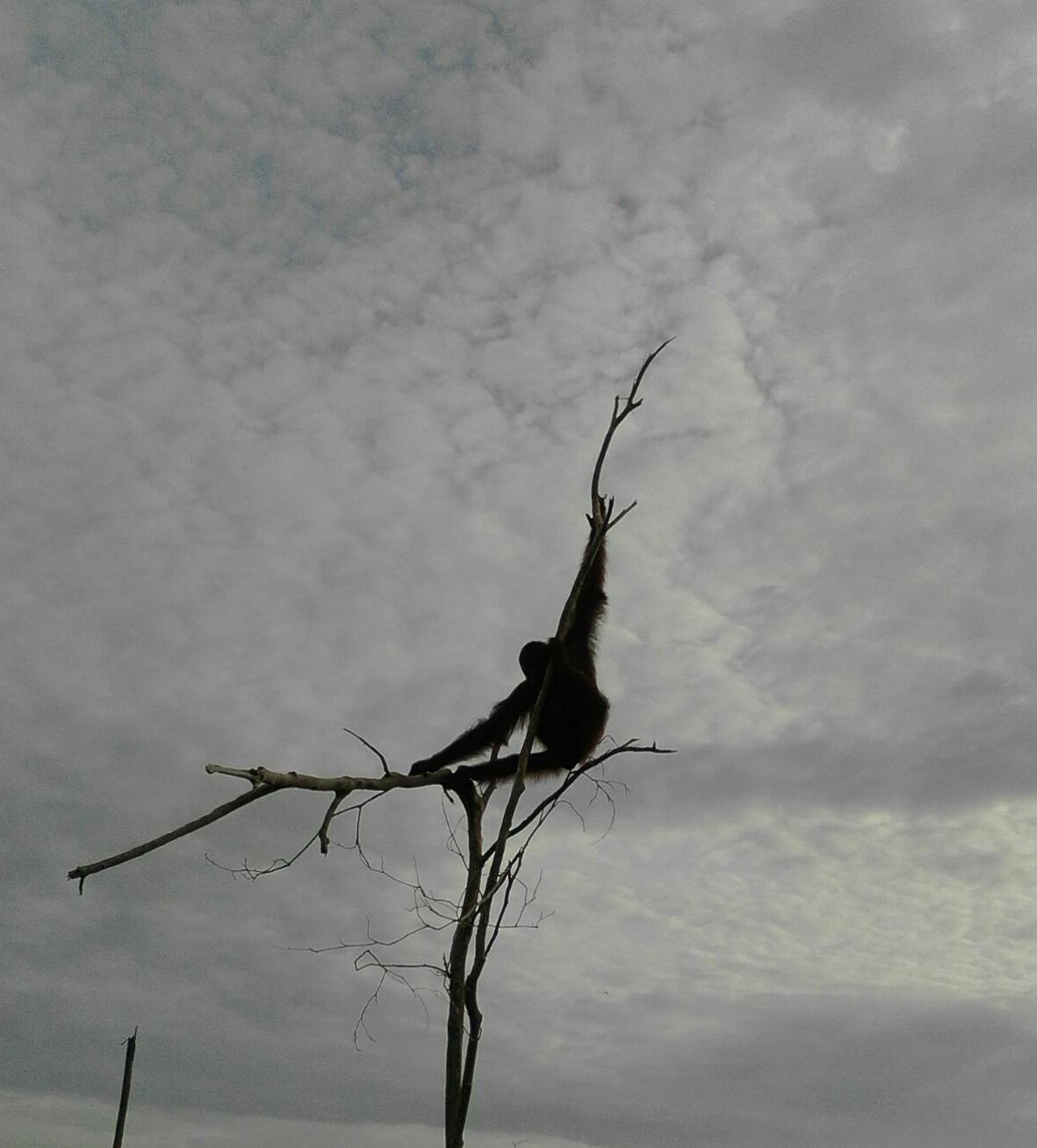



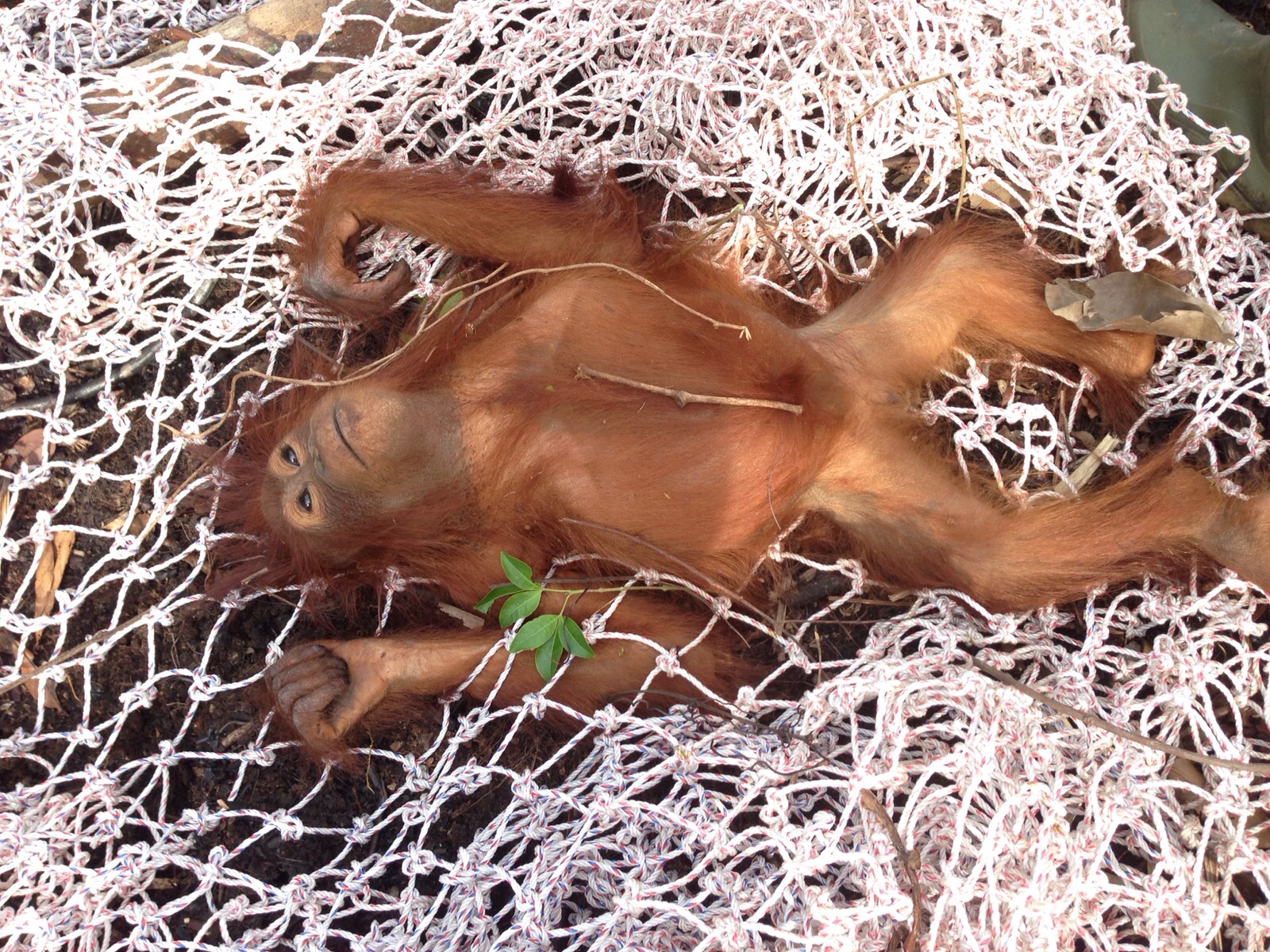

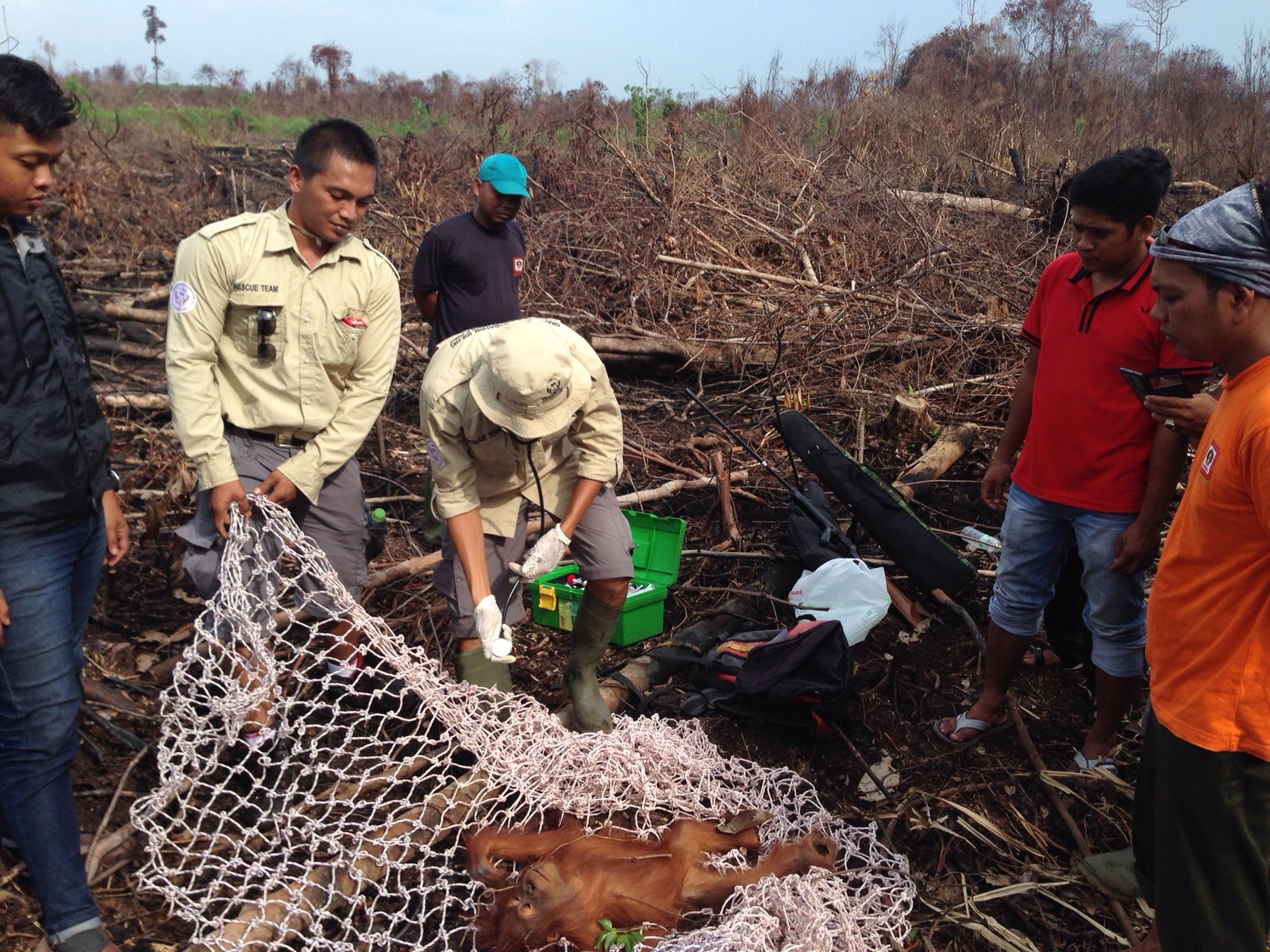



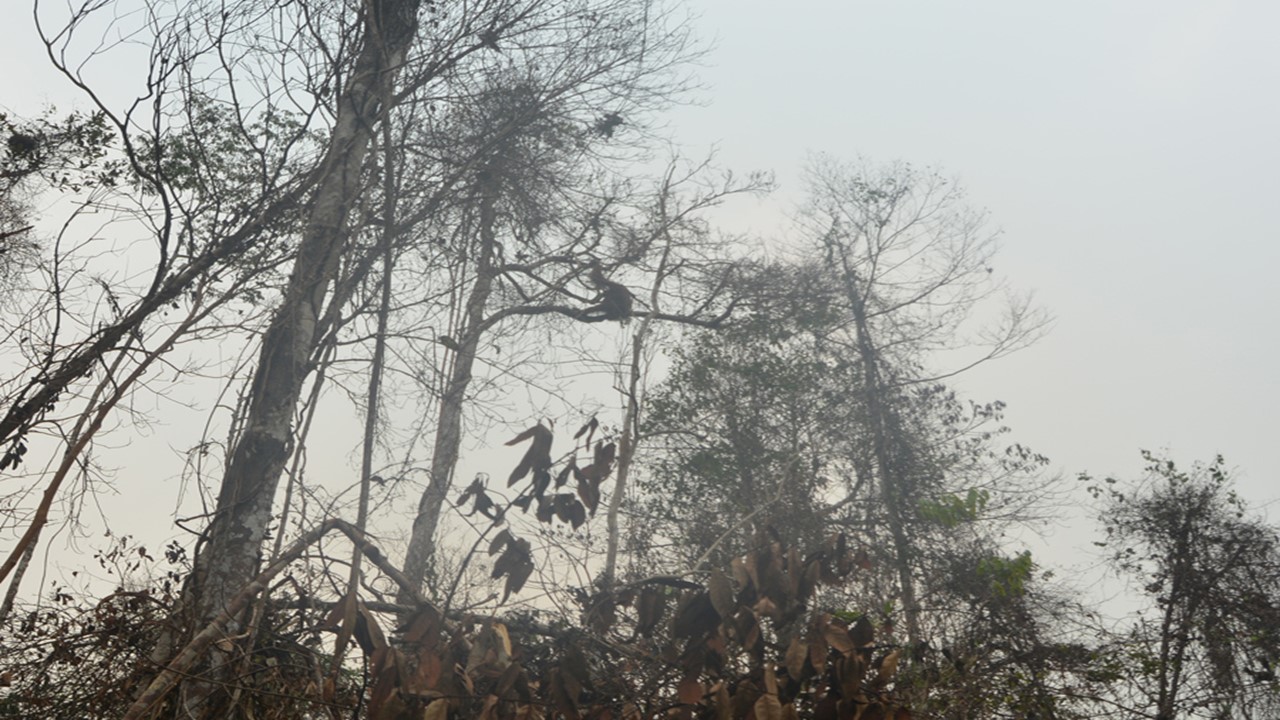

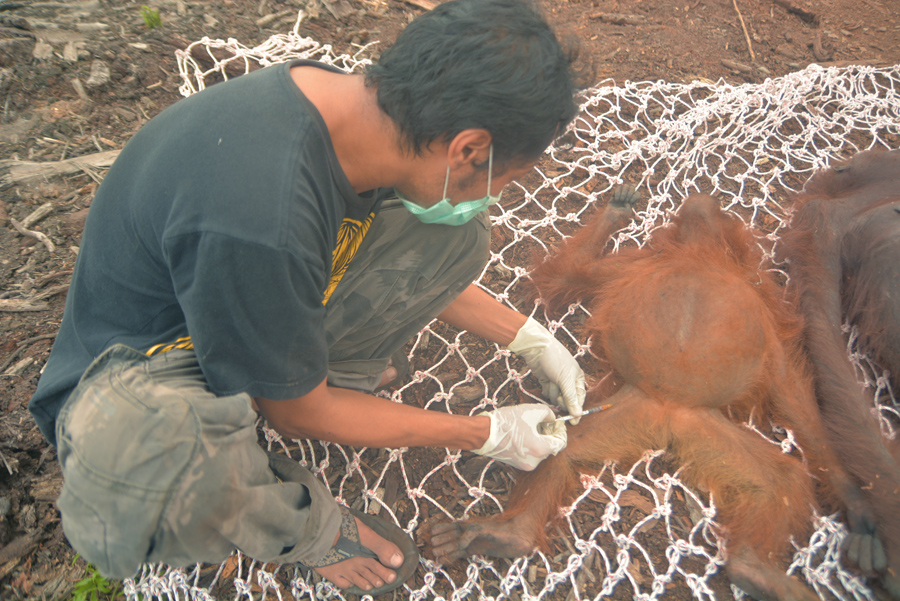



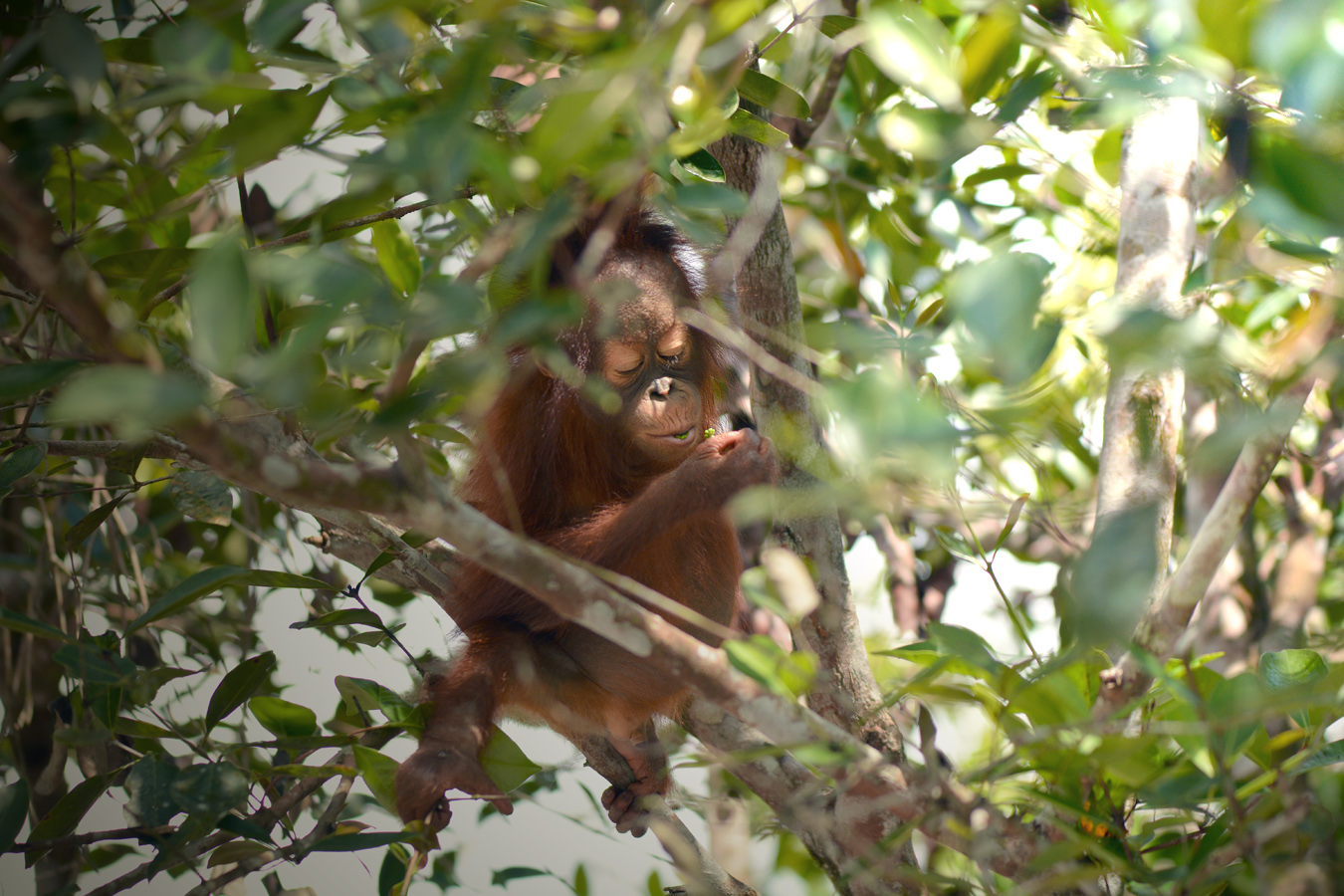

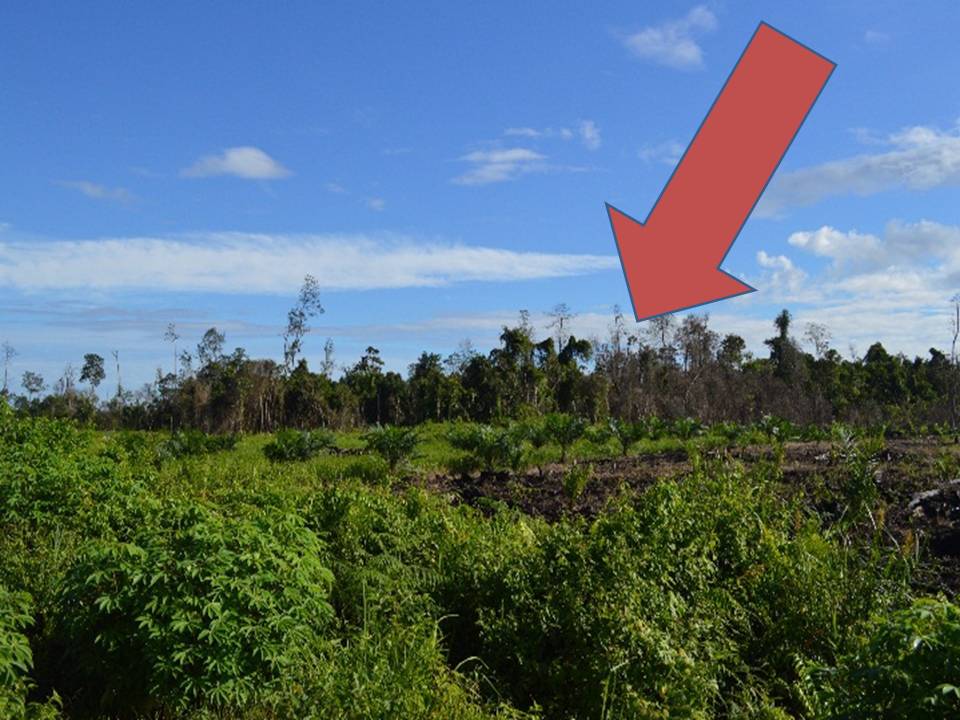
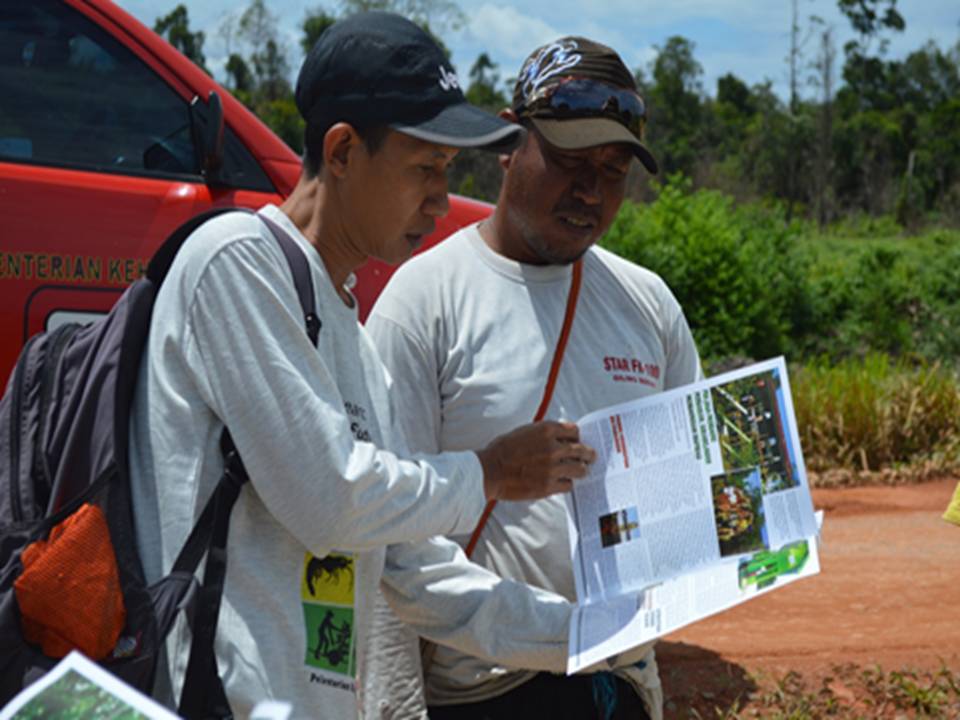

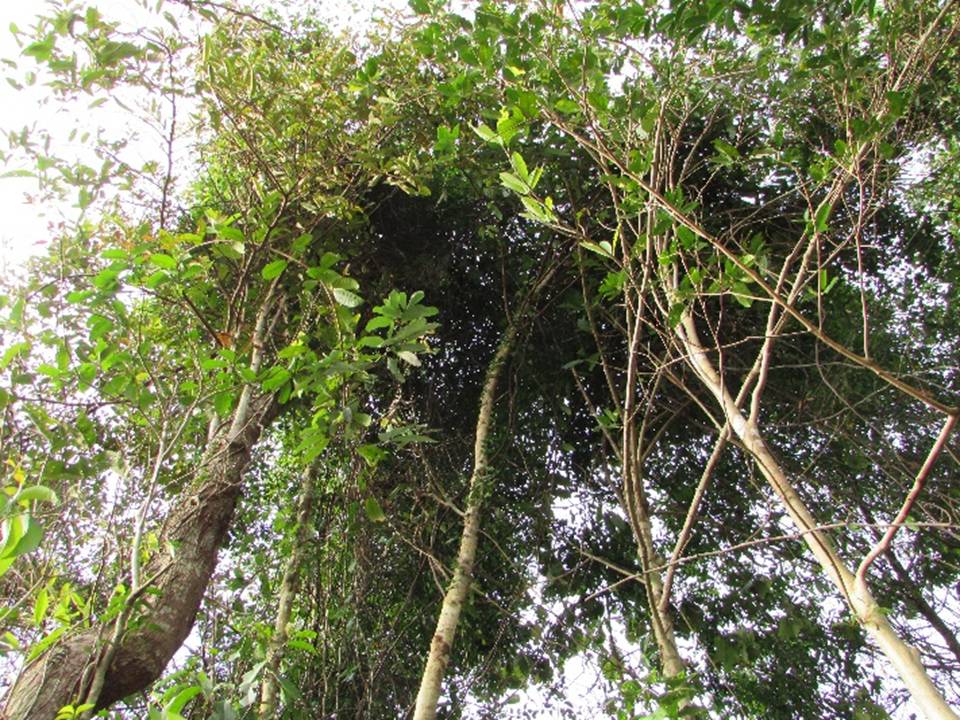
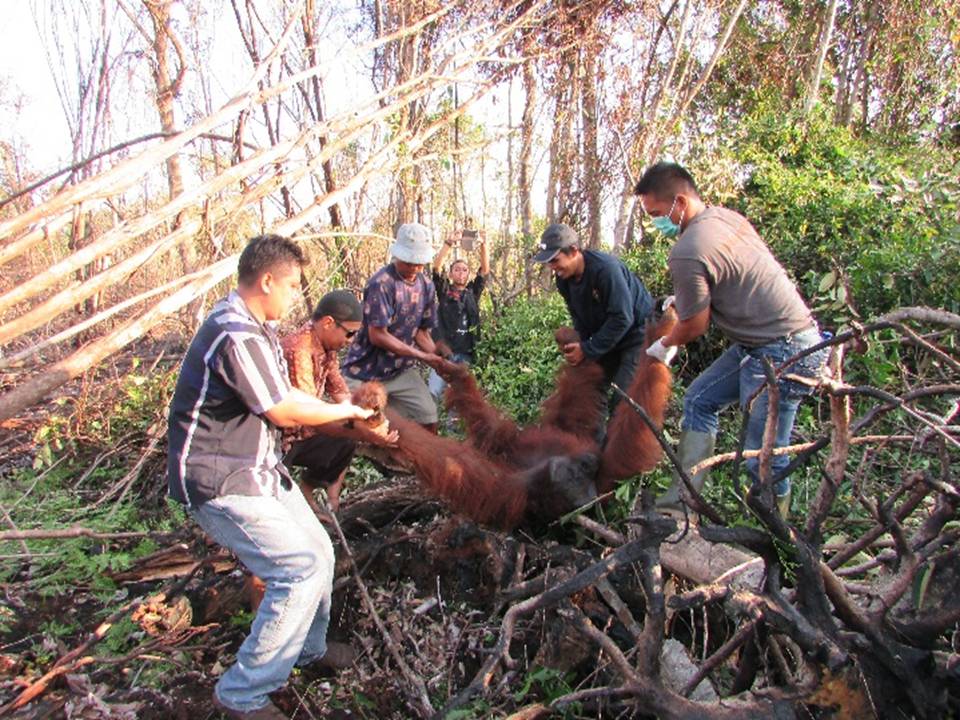


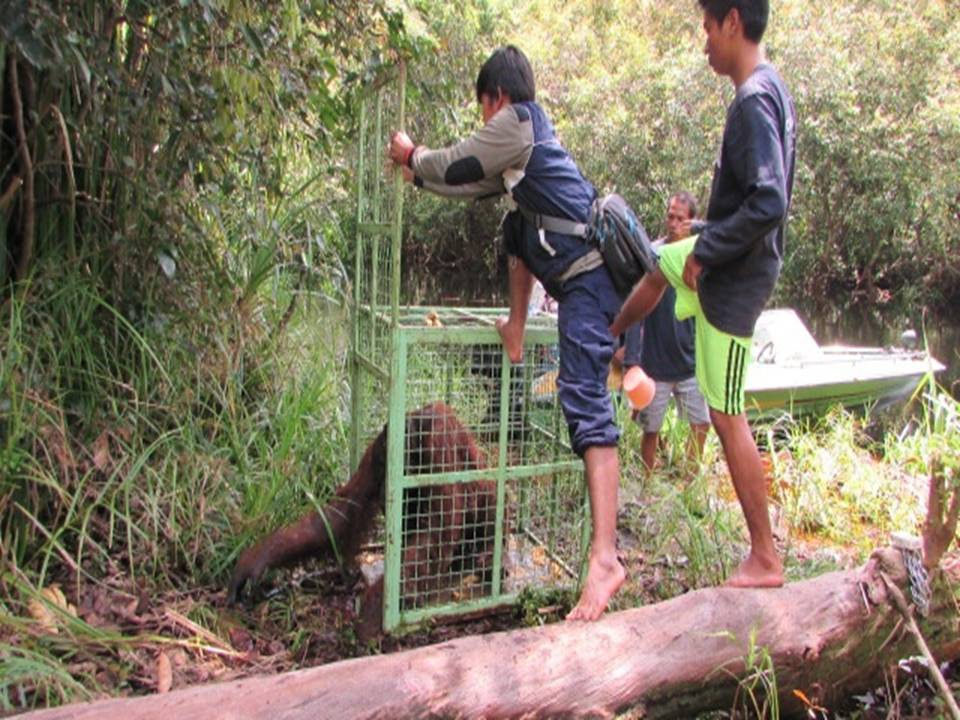









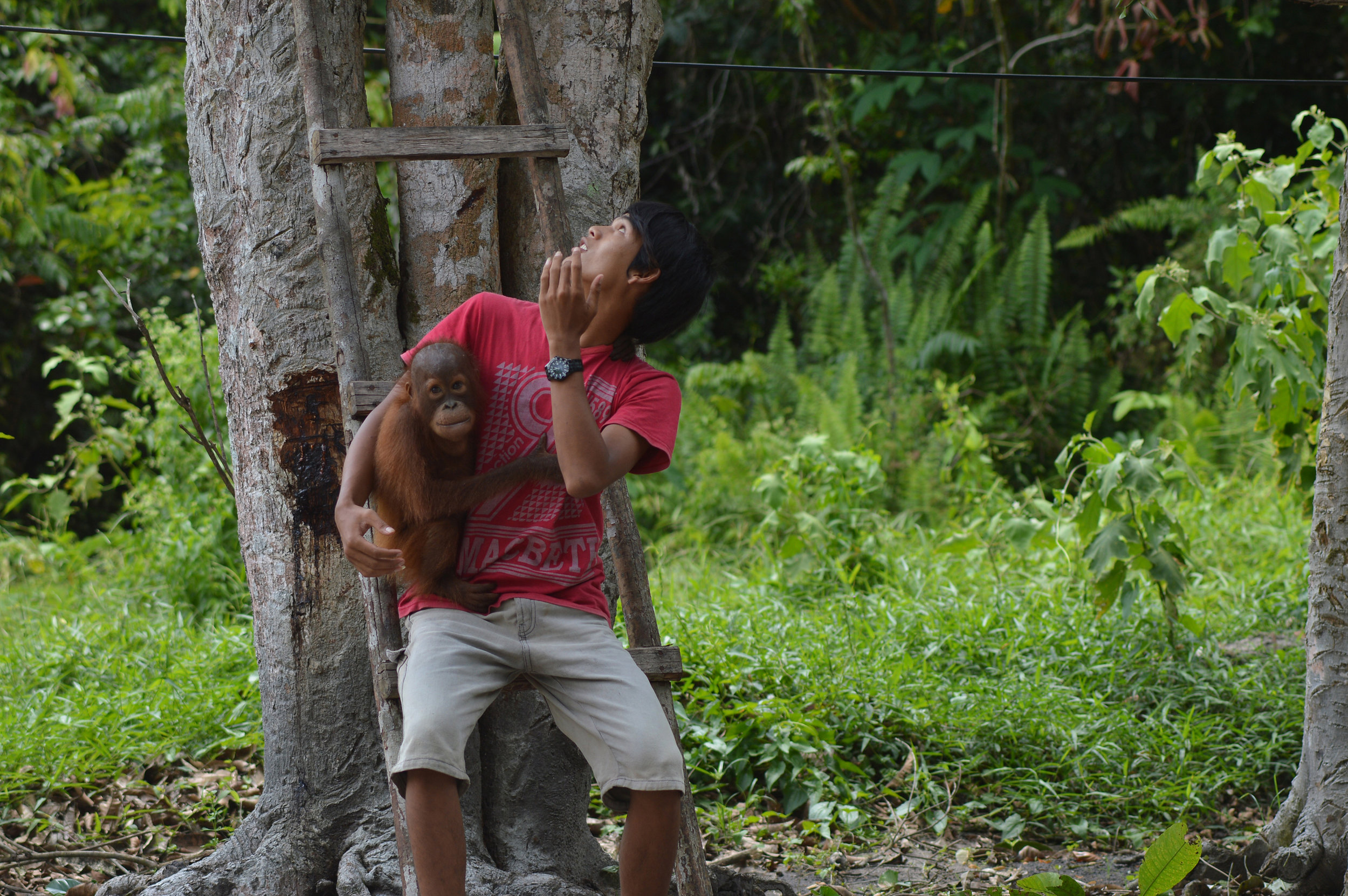


 The Ape Alliance is an international coalition of organisations and individuals working for the conservation and welfare of apes. The Foundation is a founding member of the Alliance.
Here Sir David Attenborough, Dr Jane Goodall and other speak in a panel discussion with Ape Alliance Chair and Foundation Trustee, Ian Redmond OBE at Ape Alliance's 'Hope for Apes' evening in 2010 at the Lyceum Theatre
The Ape Alliance is an international coalition of organisations and individuals working for the conservation and welfare of apes. The Foundation is a founding member of the Alliance.
Here Sir David Attenborough, Dr Jane Goodall and other speak in a panel discussion with Ape Alliance Chair and Foundation Trustee, Ian Redmond OBE at Ape Alliance's 'Hope for Apes' evening in 2010 at the Lyceum Theatre